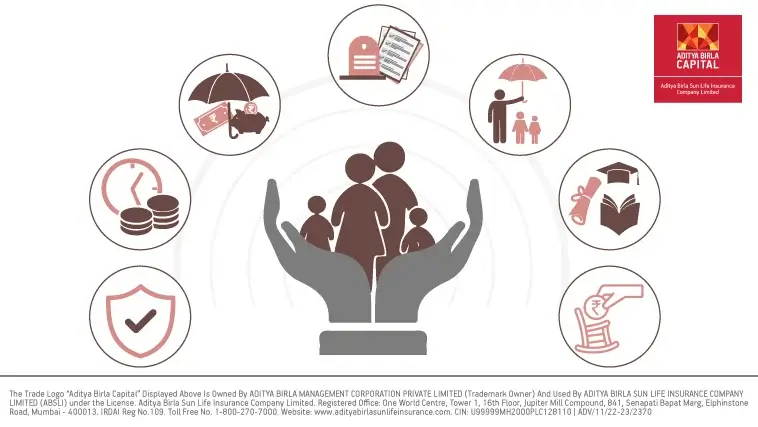Inflation, in the simplest terms, is the rising costs of commodities and services in the country, whether it’s food, housing, fuel, light, transportation and communication.
You must have heard your parents talk about how prices have risen over the years. Did you know that a tola (10 grams) of gold was priced at ₹3,200/-1 in 1990? It now costs almost Rs 73,000!
According to this report, the price of cooking oils rose from 50-100%2 in the last year, mainly because of the Russia-Ukraine conflict. Sunflower oil used to cost Rs 98/litre in 2019 and now costs between Rs 180-250.
The rate of inflation can vary across years, and it becomes an important facet of financial planning.
Inflation is caused by a blend of many factors and has become even more complex with the coronavirus pandemic and consequent lockdowns and labour shortages. Reasons like increasing demand for goods and services, rising costs of raw materials and wages, devaluation of the currency, and increasing taxes% and subsidies - can all contribute to rising inflation.
Now, let’s dive into the details of how inflation can impact your life insurance!
How Does Inflation Impact Life Insurance?
As we can see, inflation has a direct impact on our everyday expenses (grocery bills, utilities, fuel, etc.) as well as long-term investments (buying a house, children’s education, etc.). You will have to pay more for every product and so, the higher the inflation, the lower your purchasing power. You cannot use the same amount of money to buy the same things in the future.
It is, therefore, important to save and make worthwhile investments to secure your and your family’s financial futures, especially if you are the sole earning member. Your investments should accommodate inflation to ensure that the money you accumulate doesn’t fall short in the future.
Thus, inflation can significantly impact life insurance in several key ways. Your life insurance coverage may not provide for your family's needs after you pass away if the payout value is not in line with inflation. Let’s imagine this with an example - suppose you have a policy to pay off your mortgage. However, if the amount fails to adjust for inflation, it might not be possible to cover your future mortgage when there will be a rise in future prices.
Nevertheless, you can implement several strategies to mitigate the effects of inflation on life insurance. These have been provided below:
● Continuous Monitoring Of Your Policy: It's crucial to periodically examine your policy to make sure it still suits your needs and, if not, make any required adjustments.
● Improving Financial Security With Add-ons: Certain insurance plans come with add-ons that gradually raise the coverage amount to keep up with inflation. You will have enhanced financial security if you opt for additional features.
What Are The Factors To Consider While Selecting A Life Insurance Plan?
There are specific factors that you should consider before proceeding with a specific life insurance plan. Let’s understand them below-
● Understand Your Needs
The first step in choosing the best life insurance coverage is determining your own needs and requirements. This covers things like your age, your income, your financial obligations, and the needs of your dependents. By conducting a comprehensive study, you can identify the ideal coverage to safeguard your loved ones while you're away.
● Choosing The Most Suited Policy
Next, zero down on the policy type. For instance -
○ Term Life Insurance: Purchasing a term life insurance policy could be a good idea if you have dependents who depend on your income to sustain them financially in the event that you are not around.
○ Endowment Policies: An endowment policy may be the best choice if you're trying to save for long-term financial objectives like your child's education or your wedding costs. It provides a savings component in addition to life insurance.
○ Retirement Plans: Retirement plans can be a prudent decision if you are saving for your golden years. These plans guarantee# a consistent flow of income after retirement to support any costs and preserve your standard of living.
You need to choose the right type of policy aligning with your specific goals and needs by comparing it against other life insurance policies.
● Determining The Total Amount Of Coverage You Require
Determination of the total coverage amount is pivotal because it is the cover amount your family will get after you pass away. So, you need to calculate the amount of coverage carefully. It is also the amount that, should you survive the insurance term, you will get for your financial goals under some plans. The coverage quantity needs to be adequate to meet the demands of you and your family. You can use life insurance calculators online to determine the right coverage for you. All that is required of you is to enter information such as your age, occupation, income, etc.
● Deciding The Right Policy Tenure
Policy tenure is the time frame during which your insurance policy will provide coverage. Your age, financial objectives, and the length of time your family will be dependent on your income are all important considerations when determining the optimal term for your insurance.
● Identifying The Policy Features
Make sure you perform an in-depth analysis of the policy features and the specifications. Keep an eye out for features like riders, which offer a higher payout in the event of an accident, disability, or serious illness. Additionally, see if there is an add-on available that waives premiums in case you are diagnosed with a critical illness or are permanently disabled.
● Comparing Premiums
Always compare the premium quotes of different insurance policies with similar features and coverage options and find the most appropriate policy according to your requirements. You may consult an advisor or use online comparison tools to compare the different premium quotes.
● Reading The Final Policy Document Cautiously
Make sure that you have an in-depth understanding of all the policy's terms and conditions before you make your final decision. It is beneficial if you understand the inclusions and exclusions of your policy and further assess the lock-in periods and scenarios that can make claims invalid.
Once you have completed all the necessary checks, you are ready to purchase the policy that best suits your and your family’s needs!
Understanding the impact of inflation on your savings is crucial for securing your financial future. Let’s understand below how inflation can impact your savings!
How Does Inflation Affect Your Savings?
?First, let’s assume that a product costs Rs 10,000 today and that the inflation rate is 6% per year. This table shows you how the product price will vary over the years:
| Year | Amount (Rs) |
|---|
| 2022 | Rs 10,000 |
| 2023 | Rs 10,600 |
| 2024 | Rs 11,236 |
And so on.
?Now, let’s see how a savings amount of Rs 10,000 will change over the years.
| Year | Amount (Rs) |
|---|
| 2022 | Rs 10,000 |
| 2023 | Rs 9,400 |
| 2024 | Rs 8,836 |
And so on.
What can you observe from both these tables? It is evident that as inflation continues to grow, the price of goods/services will rise and the value of your savings will dwindle - and you may not be able to live the same lifestyle and buy the same products for the same amount of money.
To Conclude,
Understanding the dynamics of inflation is fundamental for safeguarding one's financial stability and future. As we've explored, inflation impacts everything from daily expenses to long-term investments and savings, gradually eroding purchasing power over time. With prices rising steadily, it's imperative to account for inflation when planning investments and selecting financial products like life insurance. Failure to do so could leave individuals and families vulnerable to financial strain in the future. By staying informed, making informed decisions, and periodically reassessing financial strategies, individuals can navigate the complexities of inflation and ensure a secure financial future for themselves and their loved ones.
So, make sure you factor in inflation whenever you make an investment whether it’s a fixed deposit, mutual fund, retirement savings scheme, life insurance, etc. What seems a comfortable amount today may not be sufficient a few years later - when you actually need the money.
Sources:
[1] https://www.bankbazaar.com/gold-rate/gold-rate-trend-in-india.html
[2] https://theprint.in/india/as-cooking-oil-prices-rise-indian-households-spend-more-look-for-cheaper-alternatives-survey-shows/912563/










